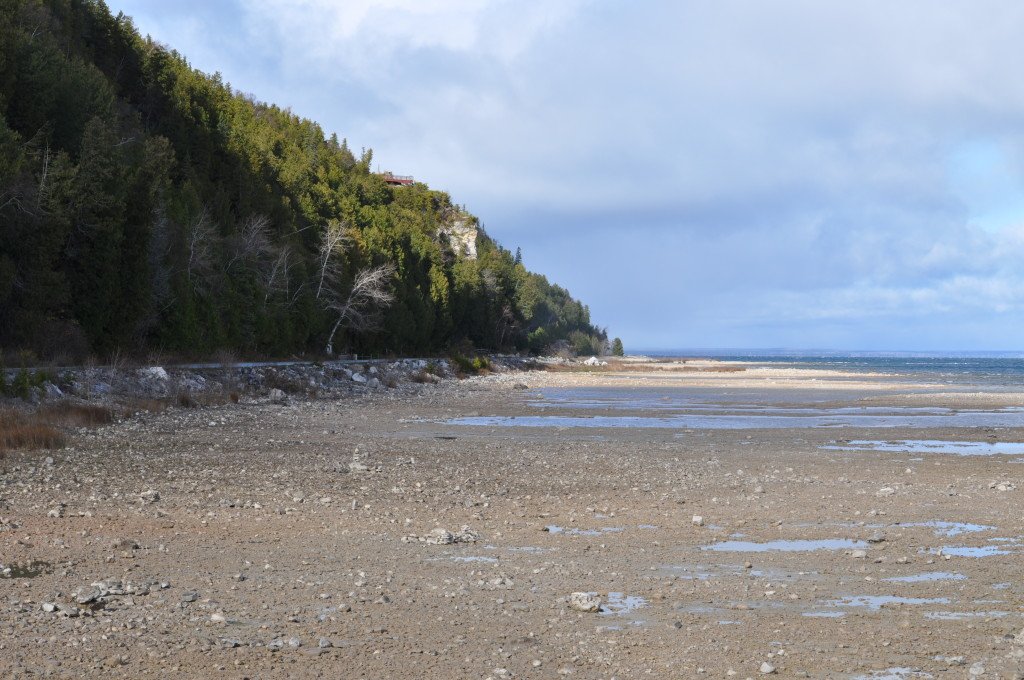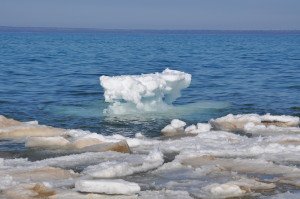The Great Lakes water levels have both seasonal changes and long term changes.
In a normal year the water level of Lakes Michigan and Huron rise and fall about 11 inches. The high usually occurs in July and the low in February. The melting snow and spring rains cause the levels to rise until mid-summer. Then the water levels slowly drop as the water warms and evaporation takes place. When fall and winter arrive, the rate of evaporation increases, because the water is warmer than the cold dry winds from the northwest. The quicker the ice forms and the more lake it covers, the sooner the drop in water level is reversed. By February the lake level usually stabilizes before it rises again in the spring.


The highest water level recorded during the past 100 years was in October of 1986 and the lowest level was recorded 27 years later in February of 2013. The difference between the record high and low is about 6 feet. Some of us living on the Straits of Mackinac have witnessed both those extremes, and would rather see the lake levels stay closer to the middle of that 6 foot range.
Sometimes the long term changes take many years, like the gradual 27 year decline between 1986 and 2013. We are presently witnessing a major change of the lake level in a very short time. From that record low in February of 2013 the water level has increased about 3 feet in just two years. Now that is quick!
A big reason for this major water level rise was the winter that we all experienced last year. Remember when the polar vortex that usually stays around the North Pole every winter, was displaced and spent a lot of time hanging around the Midwest. Sorry for reminding you!
Well all that cold created a layer of ice over the Great lakes that we have not seen in decades. The ice cover prevented the usual winter time evaporation to occur and the colder water this past summer and fall further reduced the evaporation rate, so the water levels increased almost every month in 2014. That is not a typical seasonal pattern.
I can’t predict the long term changes in the water levels of the Straits of Mackinac, but because the extreme cold didn’t arrive until late this winter and the ice cover didn’t form as early as last winter, I don’t see us reaching the record high water levels of 1986 anytime soon.









